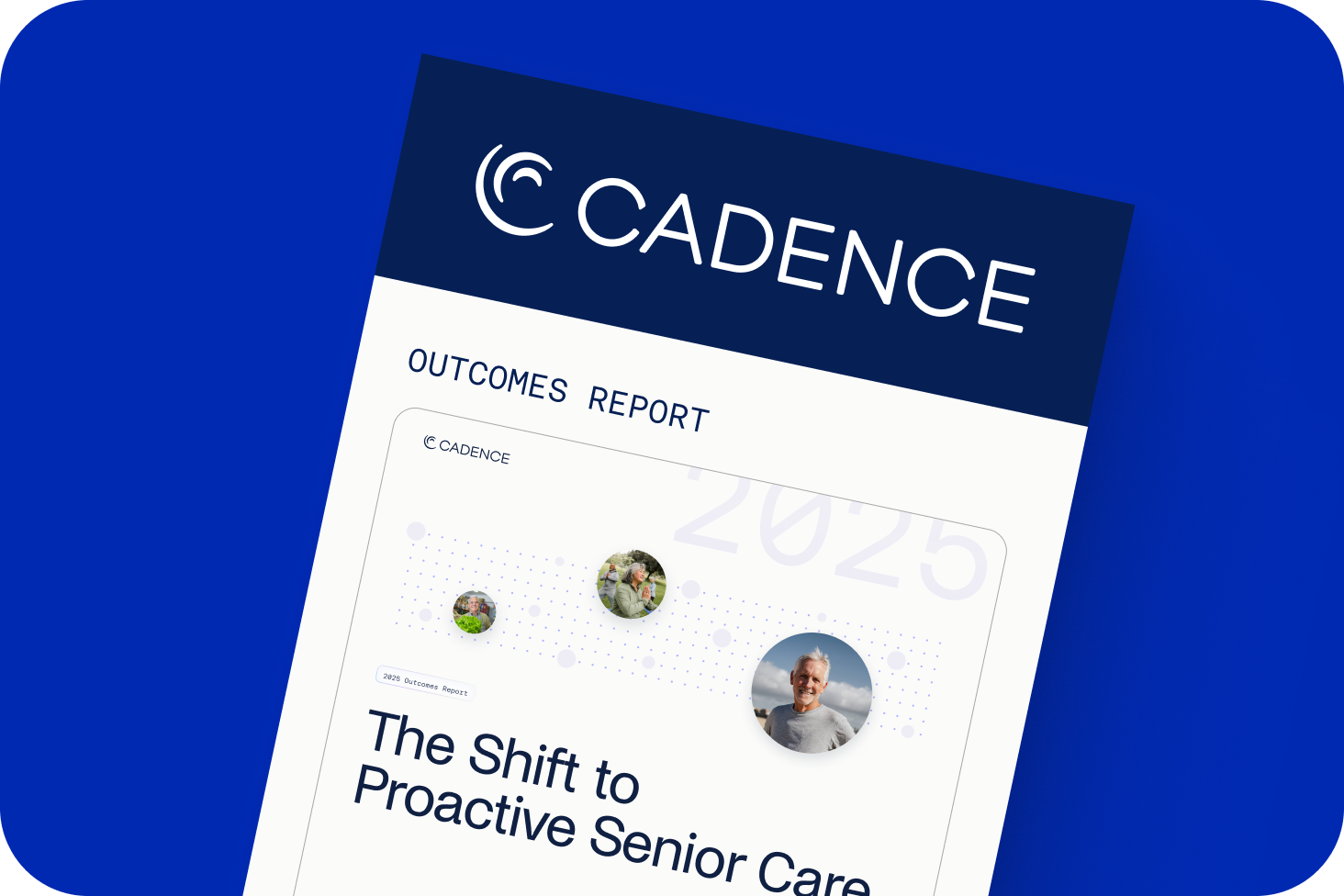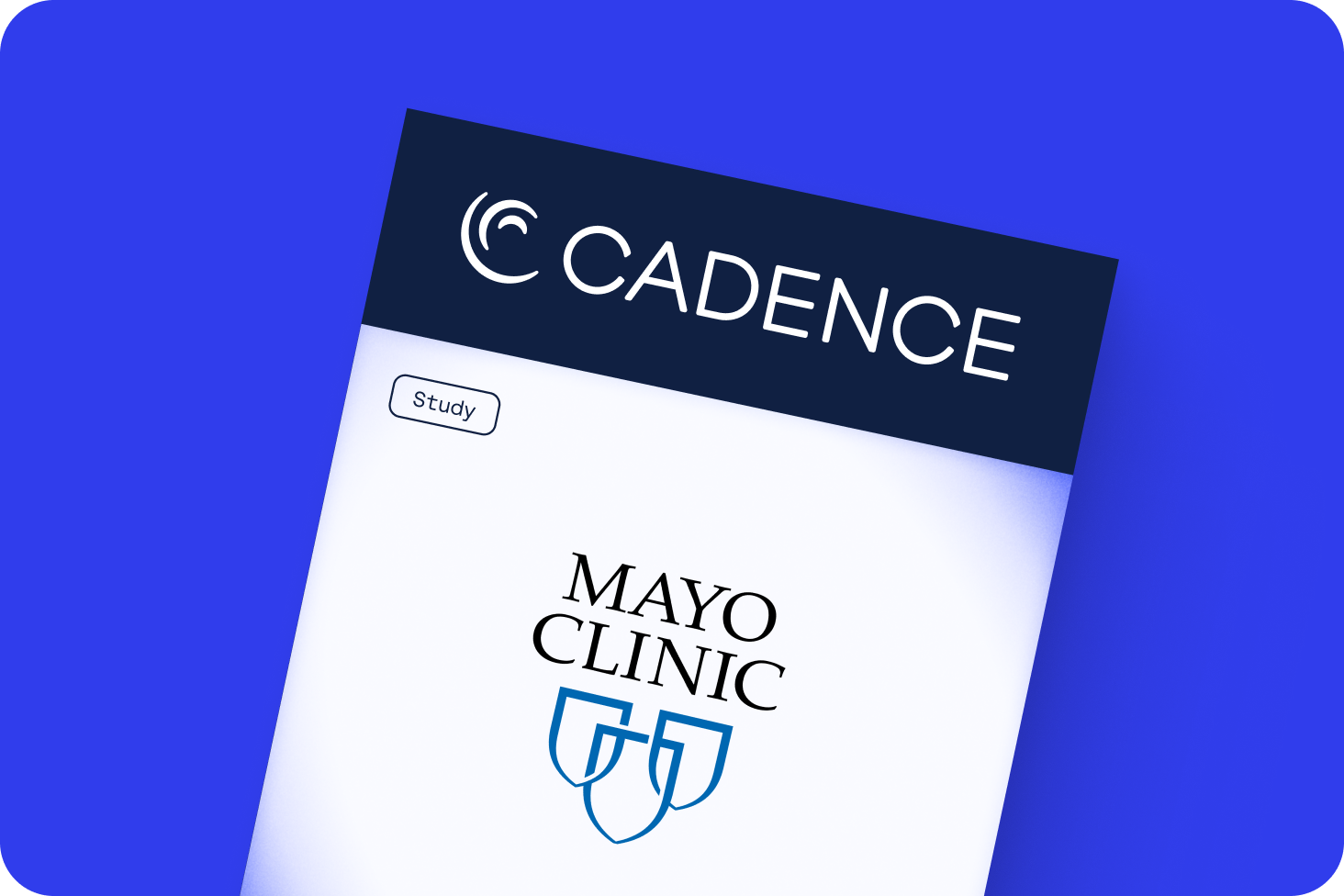One year of progress with LifePoint Health & Cadence


LifePoint Health and Cadence reduced the number of heart failure patients who presented to the emergency room by 50% in North Carolina, expanded the program to four additional markets, and deployed care pathways for hypertension and diabetes.
One year ago, Cadence forged a founding partnership with LifePoint Health, one of the leading national healthcare companies in the country. Our mission was bold: Could we use remote patient monitoring (RPM) and virtual care to vastly improve health outcomes for seniors with chronic conditions by delivering consistent, proactive healthcare outside the walls of the hospital?
Our goal was to use technology to deliver better health outcomes, increase access and equity across the country, support overburdened clinicians, improve financial metrics, and lower the cost of care.
“Previous remote monitoring programs have struggled to scale beyond a few thousand patients, even though millions of patients could benefit in the U.S,” said Jessie Beegle, Senior Vice President and Chief Innovation Officer for LifePoint Health. “Bringing together LifePoint’s national reach and innovative culture with Cadence’s end-to-end solution, we set out to deliver world-class care to over 100,000 people living with chronic conditions across the country. Our results after one year show that we are delivering consistent, proactive healthcare every day.”
Initial results show win-win for patients, providers, and payors
We initially launched our program for patients with heart failure in North Carolina, and have since expanded to serve patients with type 2 diabetes and hypertension across 12 LifePoint hospitals and clinics. We began by enrolling patients in the clinic and now also enroll patients in the hospital prior to discharge. Data from our longest lasting cohorts is promising:
Patients are more connected to LifePoint providers.
- When analyzing all enrolled patients, 95% engage with Cadence more than 16 days per month
- Thanks to continuous clinical contact, LifePoint clinics saw a 30% decrease in no-show rates
Leading to improved clinical outcomes.
- The number of patients with well-controlled blood pressure at 10 weeks into the program doubled (1)
- The number of heart failure patients who presented to the emergency room decreased by 50% (2)
Improved clinical efficiency.
- Approximately 1% of virtual encounters are escalated to LifePoint physicians, allowing them to spend more time with their in-office patients and see more new patients from their waitlist
Lower cost of care.
- Enrolled ACO patients have experienced a 19% decrease in healthcare costs
Increased Patient Satisfaction & Retention
- 98% of patients say they are receiving the highest quality medical care in a way that is easy for them to understand
- 97% of patients feel more connected and supported by their providers
Our approach to successful partnership
RPM has historically struggled with clinician adoption. Technology, alongside operational and clinical support, is critical to scaling partnerships. We have combined these to scale our platform without creating additional burden on already stretched clinical teams. Our partnership includes full clinical services, including medication titration that is supported by mutually agreed upon protocols between both Cadence and clinicians at LifePoint.
“Health systems need strong tech partnerships and robust platforms, not just point solutions,” added Beegle. “Many patients are managing multiple conditions and need flexible solutions that work across service lines. As RPM matures, we believe it will become part of the standard of care across health systems.”
We launched with an initial focus on increasing adherence to Guideline Directed Medical Therapy (GDMT) treatment for heart failure patients in a single market. Our vision is to build the most effective remote care platform for people with chronic conditions in the country. With learnings, results, and continuous improvement, we have been able to rapidly expand to new conditions and new markets.
Looking to the future
“From the start of our partnership, we have been aligned on our mission, clinical goals, and desire to bring best-in-class technology to communities across the US,” said Beegle. “LifePoint is building a more flexible care model that extends comprehensive patient care to the home. Together, we have focused on creating a modern and seamless patient experience that improves access to care and patient outcomes.”
“LifePoint's leadership and deep commitment across the entire organization to our partnership has resulted in rapid learnings and growth. We like to call LifePoint the HOV lane for innovation,” added Cadence’s CEO and Founder, Chris Altchek. “As we expand to serve patients with new conditions, add new devices, and help drive new payor contracts and models, we are excited to continue to expand our partnership and make a positive impact on the health of patients with chronic conditions across the United States.”
Footnotes:
(1) Well controlled defined as less than 130/80 mmHg.
(2) Patients with cHF in North Carolina. The number of unique patients with ED visits is normalized for patient tenure in the program.






